


It is a transcontinental Arab country extending over the northeastern corner of Africa and the southwestern corner of Asia across a land bridge formed by the Sinai Peninsula. Its population was estimated at more than 105.5 million people, ranking it fifteenth among the countries in the world in terms of population and the most populous in the Arab and Middle Eastern countries. It is bordered to the north by the sea. The Mediterranean, to the south Sudan, to the east the Red Sea, to the northeast Gaza Strip and Israel, and to the west Libya. The area of the Arab Republic of Egypt is about 1,010,408 square kilometers. The inhabited area is 78,990 km2, or 7.8% of the total area. Egypt is divided administratively into 27 governorates, and each governorate is divided into smaller administrative divisions, which are centers or departments. Egypt is famous for having one of the oldest civilizations on the face of the earth, as humans began to migrate to the banks of the Nile and settle there, and began to cultivate the land and raise livestock about 10,000 years ago. Its people developed rapidly, simple industries began, its cohesive social fabric developed, and they formed neighboring, peaceful emirates on the banks of the Nile that exchanged trades. Egypt is famous for many monuments, such as the Pyramids of Giza and the Sphinx, the Karnak Temple, Deir el-Bahari, the Valley of the Kings, and its other ancient monuments, such as those in the city of Memphis, Thebes, and Karnak. Some of these antiquities are displayed in major museums all over the world, and a special science has been found to study the antiquities of Egypt called Egyptology. There are also Roman, Greek, Coptic, and Islamic antiquities of various eras. The ancient Egyptian language is one of the oldest languages in the world and lasted more than 3,000 years. The ancient Egyptians invented hieroglyphic writing. Arabic is its official language, and according to the constitution, the official religion is Islam.

Cairo is the capital of the Arab Republic of Egypt and its largest and most important city ever. It is the largest Arab city in terms of population and area, and occupies second place in Africa and seventeenth in the world in terms of population. Cairo is one of the most culturally and civilizationally diverse cities, as it has witnessed many different historical eras. Throughout the ages, there are many ancient and modern monuments, so it has become an open museum that includes Pharaonic, Greek, Roman, Coptic, and Islamic antiquities. The history of the city goes back to the establishment of the Pharaonic city of On, or Heliopolis Ain Shams today, which is one of the oldest cities in the ancient world. As for Cairo in its current style, its establishment dates back to the Islamic conquest of Egypt at the hands of Amr ibn al-Aas in the year 641 AD and the establishment of the city of Fustat, then the Abbasids’ establishment of the military city. Ahmed Ibn Tulun built the city of Al-Qata’i, and with the Fatimid entry into Egypt, coming from what is now Tunisia, Africa, Commander Jawhar Al-Siqilli began building the new capital of the Fatimid state by order of the Fatimid Caliph Al-Muizz Li Din Allah in the year 969 AD, and the Caliph called it “Cairo.” Cairo has been given 🔹 throughout the ages 🔹 many names: the City of a Thousand Minarets, the Guarded Egypt, and the Cairo of the Moez. During the Islamic era, Cairo witnessed the finest architecture, which was represented in the construction of castles, fortresses, walls, schools, and mosques, which gave it an aesthetic glimpse that is still present in its ancient neighborhoods until now. .

The Great Pyramid and the Pyramid of Khafre are among the largest pyramids built in ancient Egypt. They were historically popular as symbols of ancient Egypt in the Western imagination. They became famous in Hellenistic times when the Great Pyramid was listed by the Greek poet Antipater as one of the Seven Wonders of the World. They are by far the oldest wonders of the world. The oldest and only ones that still remain, the pyramids, according to one hypothesis, are royal tombs, each of which bears the name of the king who built it and was buried in it. Pyramid construction is a stage in the development of tomb architecture in ancient Egypt. It began with a small pit that turned into an underground room and then into several rooms. It was topped with a mastaba, then it developed to take the shape of a step pyramid at the hands of the engineer Imhotep, the minister of the Pharaoh and King Djoser in the Third Dynasty. This was followed by two attempts by King Sneferu, the founder of the Fourth Dynasty, to build a complete pyramid shape, but the backs of the two pyramids were not of sound shape, and they are located in Dahshur. One of them was flattened at the base and the other took a smaller shape of approximately Half the size of the first. The engineer Hemyuno, King Khufu’s engineer, was able to achieve the ideal pyramidal shape and built the Pyramid of Khufu in Giza on an area of 13 acres, followed by the pyramids of Khafre and Menkaure.
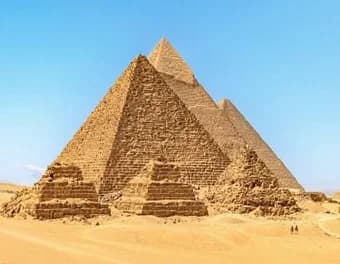
The Sphinx is a statue of a mythical creature with the body of a lion and the head of a human. It was carved from limestone. It was likely that it was originally covered with a layer of plaster and colored, and traces of the original colors are still visible next to one of its ears. It is located on the Giza Plateau on the western bank of the Nile in Giza. The Sphinx is also a guardian of the plateau, and it is the oldest known huge sculpture. It is about 73.5 meters long, including 15 meters the length of its front feet, and 19.3 meters wide, and its highest height above the ground is about 20 meters to the top of the head. It is believed that the ancient Egyptians built it during the reign of King Khafre 2558 BC 🔹 2532 BC, the builder of the middle pyramid in Giza. It is believed that the Sphinx was quarried before King Khafre thought of sculpting it into the form of a statue. This statue looks towards the east, so The original sides have been changed in the last century to match the view of the Sphinx.

The tower is considered one of Cairo's most prominent landmarks. It consists of 16 floors and stands on a base of Aswan granite stones that were previously used by the ancient Egyptians in building their temples and tombs. The trip inside the tower's elevator to reach its end takes 45 seconds. When you stand at the top, you can see a complete panorama of Cairo, the pyramids, and the building. Television, the Sphinx, the Nile, Saladin Citadel, Al-Azhar, and on the 14th floor of the restaurant, you can see the whole of Cairo and practice various other activities such as seeing through the magnifying glass in the tower. You can learn the meanings of your names in the Pharaonic language and many similar activities.

The mosque was built during the era of the Fatimids in the year 549 AH, corresponding to the year 1154 AD, under the supervision of Minister Al-Saleh Tala’i. The mosque includes 3 doors built of white marble overlooking Khan Al-Khalili, and another door next to the dome, known as the Green Door.The mosque was given this name based on the accounts of a section of Egyptian historians about the presence of the head of Hussein bin Ali buried there. These accounts mention that with the beginning of the Crusades, the ruler of Egypt, the Fatimid Caliph, feared the harm that might befall the noble head in its first place in the city of Ashkelon in Palestine, so he sent He requests that the head be brought to Egypt and the honorable head be carried to Egypt and buried in its current location and the mosque built over it.
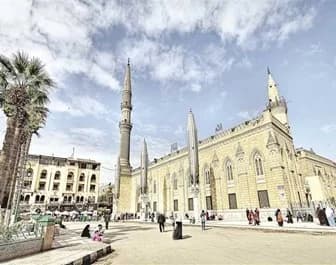
It is one of the historic mosques of Cairo. It was established during the reign of Amr ibn al-Aas in Egypt in the city of Fustat, which was founded by Muslims as the first Islamic capital. The area of the mosque at the time of its construction was 50 cubits by 30 cubits and it had six doors. It remained that way until the year 53 AH / 672 AD, when expansions continued, increasing its size. Its area was Muslim bin Mukhlid Al-Ansari, who was appointed governor of Egypt by Muawiyah bin Abi Sufyan, and he built four minarets in it. Reforms and expansions continued after that at the hands of those who ruled Egypt until its area, after continuous expansion operations, reached about twenty-four thousand architectural cubits. It is now 120 by 110 metres.

Salah al-Din al-Ayyubi began constructing a castle on top of Mount Mokattam in a place known as the Dome of the Air. But he did not complete it in his life. But it was completed by Sultan Al-Kamil bin Al-Adil. The first person to inhabit it was King Al-Kamil and he made it a royal residence. This continued until the reign of Khedive Ismail. Salah al-Din dug a well in the citadel from which the army and the inhabitants of the citadel could draw water if water was denied during its siege. It is the most amazing work that has been done, because the well is dug into the rock at a depth of 90 meters from the level of the castle’s ground, and this required a great effort at that time. The Citadel of Salah al-Din al-Ayyubi in Cairo is considered one of the most luxurious military castles built in the Middle Ages, as its location is first-class strategic.

It is one of Egypt's ancient palaces with a special architectural style. It was built by Belgian millionaire Baron Edouard Empain, who came to Egypt from India at the end of the nineteenth century, shortly after the opening of the Suez Canal. He set out to establish a new residential project in the Cairo desert under the name Heliopolis, and decided to To create his own palace, he chose a design in the style of European Indo-European architecture by the French architect Alexandre Marcel, which was on display during an engineering exhibition in Paris. The construction of the palace began in 1906 AD and it was opened in 1911 AD. Since the 1950s, with the transfer of ownership of the palace, the palace began to be neglected until the Egyptian government purchased it in 2005 for its archaeological and architectural value. The Egyptian Ministry of Antiquities began its restoration work in 2017, which ended with its opening in 2020. The palace is currently located in the heart of the Heliopolis district in Cairo.
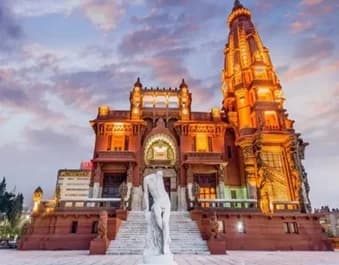
The Hanging Church is located in the Old Cairo neighborhood, in the important archaeological area of Coptic Cairo. It is close to the Amr Ibn Al-Aas Mosque. It was called the Hanging Church because it was built on two of the ancient towers of the Roman fort. The Hanging Church is considered the oldest church that still remains in Egypt. The church was built on the ruins. A place where it is said that the Holy Family (the Virgin Mary, the Christ Child, and Saint Joseph the Carpenter) took shelter during the three years they spent in Egypt escaping from Herod, the ruler of Palestine, who had ordered the killing of children for fear of a prophecy he had received.
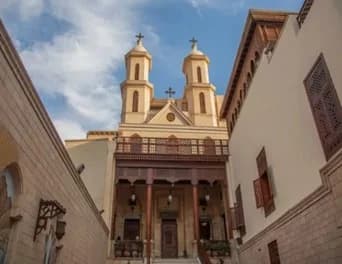
Steigenberger Hotel El Tahrir Cairo is a Cairo hotel with a prime location in Tahrir Square, minutes away from Khan El Khalili Bazaar and close to Egypt’s major attractions. With a total area of 21,633 square meters and overlooking the Egyptian Museum, the hotel features 295 guest rooms and suites with luxurious décor and in-room amenities. This prominent hotel is an ideal location for business trips and social events, offering a variety of culinary outlets, a swimming pool, a fitness center and banquet facilities..
https://hrewards.com/en/steigenberger-hotel-el-tahrir-cairo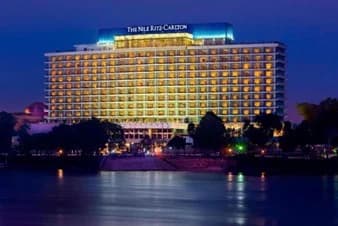
Located in the heart of Cairo, between the Nile River and Tahrir Square and near the Egyptian Museum, the hotel also features panoramic views of the Nile Corniche and only a short walk through the Nile Palace Bridge and the Egyptian Opera House.
https://www.ritzcarlton.com/en/hotels/cairz-the-nile-ritz-carlton-cairo
Alexandria is the second capital of Egypt and was its ancient capital. It is located on the Mediterranean coast about 55 km northwest of the Nile Delta, on an area of 2523 km². It is bordered to the north by the Mediterranean Sea, and to the south by Beheira Governorate and Lake Mariout, and is bordered to the east by Abu Qir Bay. And to the west, Burj Al Arab Center. The city of Alexandria includes many distinctive landmarks, as it contains the largest sea port in Egypt, which is the Port of Alexandria, through which about 60% of the total Egyptian imports and exports pass. It also includes the New Library of Alexandria, which contains more than eight million books. It receives about 1.5 million visitors annually. It also includes many museums such as the Alexandria National Museum and the Greco-Roman Museum, and archaeological sites such as Qaitbay Citadel and the Pillar Column. The population of the city of Alexandria in 2017 was about 5,039,975 people, working in various economic activities. Alexandria is divided into nine Administrative neighborhoods are the first neighborhood of Montazah, the second neighborhood of Montazah, the eastern neighborhood, the middle neighborhood, the western neighborhood, the customs neighborhood, the Al-Ajami neighborhood, the first neighborhood of Al-Amiriyah, and the second neighborhood of Al-Amiriyah. Work on establishing Alexandria began at the hands of Alexander the Great in the year 332 BC, by Part of the water was filled in, separating an extended island in front of the main coast called “Pharos,” which has an ancient port, and a small village called “Raktos” or “Raqouda,” surrounded by other small villages also spread between the sea and Lake Mariout. Alexander the Great and his successors took it as the capital of Egypt when For nearly a thousand years, until the Islamic conquest of Egypt at the hands of Amr ibn al-Aas in the year 641, Alexandria became famous throughout history through many landmarks such as the ancient Library of Alexandria, which contained more than 700,000 volumes, and the Lighthouse of Alexandria, which was considered one of the Seven Wonders of the World, due to its height. The huge lighthouse, which reaches about 120 metres, remained standing until it was destroyed by a strong earthquake in the year 1307.

The Grand Roman Theater of Alexandria is one of the best and most important tourist places in Alexandria. This theater was built in the fourth century AD. This stage is characterized by a unique construction, as it was designed in the shape of a horseshoe, and consists of a number of rows, up to 13 rows of... The marble rows, how interesting these rows are as they are numbered with Greek letters and numbers; To organize the seating process for individuals, this theater is a relic of the Roman era, and is located in the Kom El-Dikka area.

The Alexandria Antiquities Museum is one of the most important tourist places in Alexandria. The museum has a unique location that differs from the rest of the city’s museums, as it is held inside the Library of Alexandria. Because of the presence of a group of artifacts inside the Library of Alexandria, through which you can view the collectibles and artifacts inside the museum and learn which eras these pieces belong to, as they date back to several eras such as the Pharaonic era and the Islamic era, in addition to the Greek civilization, then the Roman civilization, then the Coptic civilization, One of its features is that it displays the pieces in the same place where they were discovered.

The Black Cape Temple of Alexandria is one of the oldest and most important tourist places in Alexandria. This temple was discovered by chance in 1936 AD in Sidi Bishr, but it was transferred for preservation to the Latin Cemetery in the center of Alexandria, and the remaining part of it is in Cape Black. Also, this temple dates back to the Roman era. The method of its construction was distinctive, as it was considered the first temple to be built by a member of the people, a knight named Ididor. The temple includes a number of marble statues, such as statues of Isis and Serapis.

Ideally located in the heart of Alexandria, Hilton Alexandria Corniche offers its own private beach and wellness facility, guests can enjoy sea views from the panoramic pool terrace or enjoy various cuisines available at 6 dining venues.
https://www.hilton.com/en/hotels/alyachi-hilton-alexandria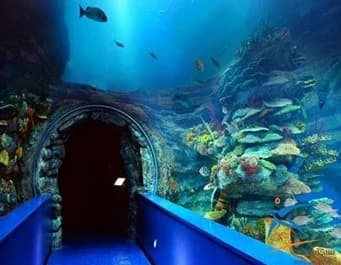
The hotel is 400 metres from Peace Theatre and Stanley Bridge and 1.5 km from Sidi Gaber Railway Station. Borg El Arab International Airport is 42 km away. The property also offers parking at an extra cost and features an outdoor pool, spa and gym. It offers modern accommodation with sea or city views. Free Wi-Fi is available in public areas
http://www.tolipalexandria.com/
The Aquarium Museum is one of the most amazing places and one of the most important tourist places in Alexandria. It is one of the rare museums in Alexandria, and a popular entertainment place for everyone, especially children. It contains a number of glass aquariums that contain some different aquatic animals and various fossilized fish. It is distinguished by its colors and exciting lighting. So you will see the various colors of fish and coral reefs, along with a group of aquatic animal structures in salt waters such as the Red Sea and the Mediterranean Sea.

Qaitbay Citadel of Alexandria is one of the oldest and most important landmarks of Alexandria. The citadel is distinguished by its ancient shape, which takes you to history and its distinctive location on the Mediterranean coast at the end of Pharos Island, west of the city of Alexandria, where the sea wraps around it from 3 sides. The construction of this citadel began when Sultan Al-Ashraf ordered Abu Al-Nasr Qaitbay built an ancient tower in the place of the old Alexandria Lighthouse. To protect and fortify the city of Alexandria from external aggression, the castle features a unique design, especially for the corridors and basements for soldiers.
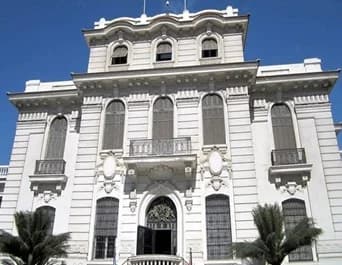
Sharm El Sheikh is an Egyptian tourist city, located at the confluence of the Gulfs of Aqaba and Suez on the Red Sea coast. With an area of 480 km2, it is the largest city in South Sinai Governorate. The city includes tourist resorts frequented by visitors from all over the world, and is famous for being one of the international diving centers that attracts amateurs and professionals of this sport. It also includes an international airport. The city of Sharm El-Sheikh was built in 1968, and is known as the City of Peace. Since that date, the city has developed rapidly until it has become It is one of the most famous tourist cities in Sinai and the world, and is considered one of the four most beautiful cities in the world according to the BBC classification for the year 2005. The city’s transformation to modern systems in architecture, entertainment, security, and hotel service has qualified it to win the UNESCO award for being selected among the five best cities for peace at the level of The world is among 400 global cities. The importance of the city lies in its location that connects the continents of Asia and Africa at the top of the triangle of the Sinai Peninsula at the head of the Red Sea between the Gulfs of Suez and Aqaba, which has led to a distinct natural and climatic environment that is considered the main element of tourist attraction.

Ras Mohammed Reserve has great international fame, as it is classified as the second most important reserve in the world. This is due to many reasons, the most important of which are: the natural monuments, historical monuments, and recreational activities present in this reserve. They are also major factors in attracting thousands of visitors annually, which is worth mentioning at the beginning that the Ras Muhammad Reserve is considered one of the most beautiful tourist places in Sharm El Sheikh. Several rare natural landmarks, such as: the rock wall nicknamed “Ras Zaatar”, the stone gate, the hidden bay, the earthquake cleft, and the Bahrain Forum. This reserve is located at the confluence of the Gulf of Suez and the Gulf of Aqaba. The eastern edge of Ras Muhammad Reserve represents a rocky wall with the waters of the Gulf in which there are coral reefs. There is also a mangrove channel that separates the Ras Muhammad Peninsula from Al-Bairah Island, with a length of about 250 metres. The Ras Mohammed region is characterized by coral beaches located in the depths of the water ocean of Ras Mohammed, colorful fish, endangered sea turtles, and rare aquatic organisms. Coral reefs surround Ras Mohammed on all its marine sides and form a unique formation, as this formation has a great impact on shaping the natural life in the region. The reserve is home to many important birds and animals, such as: the Nubian ibex in the mountainous areas, and species of small mammals, reptiles, and insects, which only appear at night.

It is an uninhabited island located at the entrance to the Strait of Tiran, which separates the Gulf of Aqaba from the Red Sea. It has an area of 61.5 km² and is about 2.5 km away from its neighbor, Sanafir Island. Administratively, the island is in the midst of its transition from dependence on Egypt to become the Kingdom of Saudi Arabia based on the maritime border demarcation agreement signed between the two countries. On April 8, 2016, which recognized the island’s affiliation to the Kingdom of Saudi Arabia. There is a small airport on the island in order to provide logistical support to the United Nations peacekeeping forces. The island is distinguished by islands and floating coral reefs, and it is also a destination for diving enthusiasts due to the clarity of its water and the beauty of its coral formations.
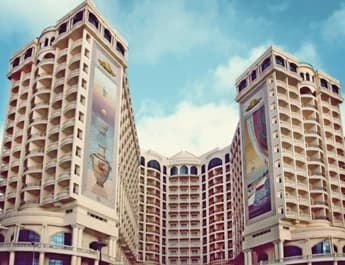
It is an uninhabited island located at the entrance to the Strait of Tiran, which separates the Gulf of Aqaba from the Red Sea. It has an area of 61.5 km² and is about 2.5 km away from its neighbor, Sanafir Island. Administratively, the island is in the midst of its transition from dependence on Egypt to become the Kingdom of Saudi Arabia based on the maritime border demarcation agreement signed between the two countries. On April 8, 2016, which recognized the island’s affiliation to the Kingdom of Saudi Arabia. There is a small airport on the island in order to provide logistical support to the United Nations peacekeeping forces. The island is distinguished by islands and floating coral reefs, and it is also a destination for diving enthusiasts due to the clarity of its water and the beauty of its coral formations.

The King Tut Museum is located in Genena City and is dedicated to King Tutankhamun. It is one of the must-visit attractions in South Sinai and is frequented by many visitors from all over the world. The museum houses many priceless artifacts from the tomb of King Tutankhamun. Apart from this, the museum also has 135 pieces in its collection including a series of photographs taken while excavating the tomb by Howard Carter and handwritten documents. The infrastructure of the museum is modern and promises profound insights into the Pharaonic civilization. The tomb was discovered in 1922 AD and the museum was designed For the highest level of illumination, the first traveling exhibition of a large number of Tutankhamun's artifacts was held from 1961 to 1966. The exhibition, entitled The Treasures of Tutankhamun, initially featured 34 smaller objects made of gold, alabaster, glass, and similar materials. The Smithsonian Institution organized parts of the exhibition, which is held in the United States of America.

Al-Sahaba Mosque is one of the mosques in Sharm El-Sheikh. It was established in the old commercial market area and its foundation stone was laid on January 10, 2011. It was opened on March 24, 2017 to become one of the city’s tourist attractions at a cost of 30 million pounds. The mosque is built on an area of 3,000 square metres, and includes two minarets. The height of each of them is 76 meters, and has a large number of domes, and can accommodate more than 3,000 worshippers. The height of its main court reaches 36 meters, over an area of 1,800 meters and can accommodate 800 worshipers. Inside it is a hallway with two prayer canopies and 36 bathrooms. This is in addition to the service buildings and commercial units that It serves as an endowment for the mosque, making Al-Sahaba Mosque the second largest mosque in Sharm El-Sheikh after Al-Mustafa Mosque.

One of the most famous entertainment complexes in Sharm El Sheikh. It is located on Al Salam Road, 5 minutes away from Naama Bay. A place suitable for all ages and very suitable for families. The most important thing that distinguishes Hollywood Sharm is the dancing fountain, as it is considered the largest and most beautiful dancing fountain in Sharm El Sheikh. The most important thing is in Hollywood Sharm. The Sheikh has life-sized models of extinct animals, such as dinosaurs in all their forms and many different animals. It also contains a large collection of statues from the Pirates of the Caribbean film series, in addition to statues from Godzilla films and other films. It contains a designated place for walking and it also includes many shops that sell clothing. And gifts. Hollywood Sharm El Sheikh includes a large group of restaurants and cafes that offer delicious food, especially seafood. It also includes a large group of different shopping centers. There are many cinemas and a 7D cinema. Hollywood Sharm El Sheikh includes many different events and shows, such as fountain shows with colors and music, in addition to the shows. Singing and magic shows.
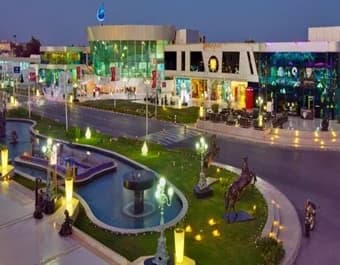
Resort Four Seasons Sharm El Sheikh is located in Egypt along a 1 km private beachfront, and is a luxurious oasis located between the desert and coral reefs, featuring year-round sunshine, elegant modern accommodation units and panoramic views of the Red Sea, 5 outdoor pools, 10 outdoor dining, a very famous spa, the entertaining Cadz Four Seasons Club, an expertly managed dive center approved by the Diving Instructors Association, in addition to one of the The best coral reefs in the area and a funicular take guests from the top to the beach.
https://www.fourseasons.com/sharmelsheikhCairo: Al-Azhar Mosque / Pharaonic Village / Abdeen Palace / Muhammad Ali Pasha Mosque / Al-Azhar Park / Japanese Garden / International Garden / Family Park Alexandria: Royal Jewelry Museum / Cleopatra Palace / Saray Al-Haqqaniya Palace Sharm El-Sheikh: Al-Salam Mosque / Church of the Heavens / Sharm El-Sheikh Museum International / Nabq Reserve / Colored Valley / One Thousand and One Nights / Sharm El Sheikh Safari

The best times to visit are from October to April. Alexandria is ideal for winter trips with its mild weather, while Cairo offers a variety of tourist attractions year-round.
Currency: Egyptian Pound
| Cairo | Alexandria | Hurghada |
|---|---|---|
| Khan El Khalili | Zanqat Al-Sittat | Senzo Mall |
| Souk Al Gomaa | Al Attareen | Hurghada Marina |
| El Ataba | El Manshiya | Cleopatra Bazar |
| Al Moski | Raml Station | Sheraton Street |
| Talaat Harb Street | San Stefano Grand Plaza | El Dahar |
| City Stars Mall | Green Plaza Mall | Hurghada City Center |
| Cairo | Alexandria | Hurghada |
|---|---|---|
| The Egyptian Museum | Library of Alexandria | Giftun Island |
| Al Azhar Park | Qaitbay Citadel | Mahmya Island |
| The Citadel | Montaza Palace | Hurghada Grand Aquarium |
| Cairo Tower | Alexandria National Museum | El Gouna |
| Khan El Khalili | Stanley Bridge | Makadi Water World |
| The Coptic Museum | Kom El Shoqafa Catacombs | Desert Safari |